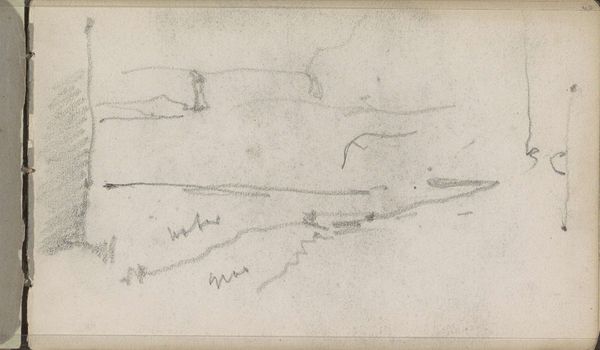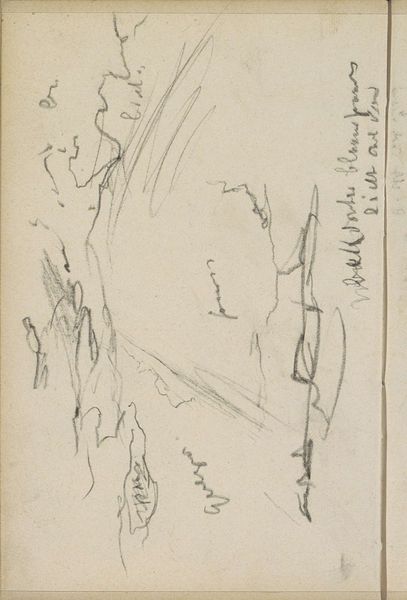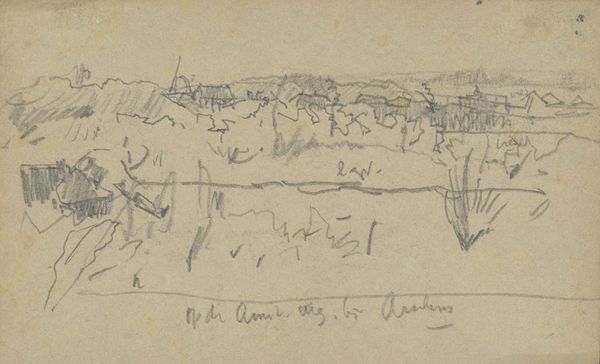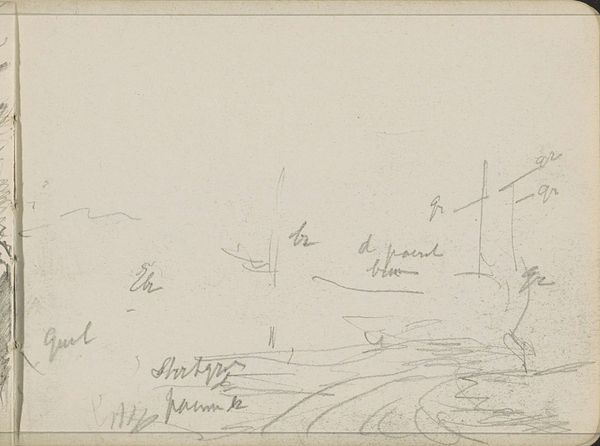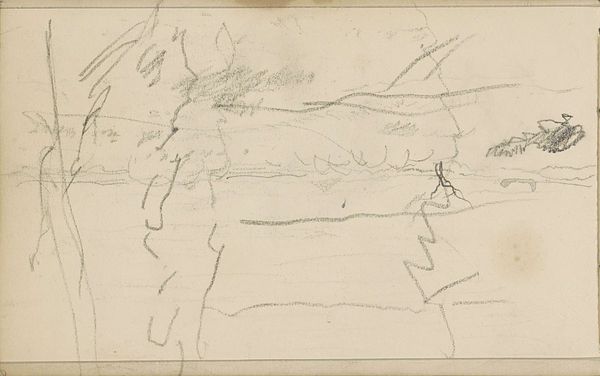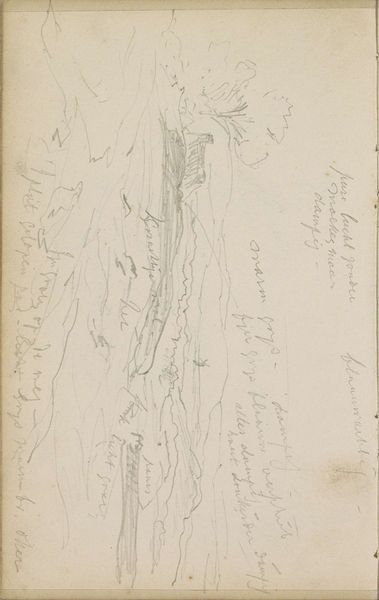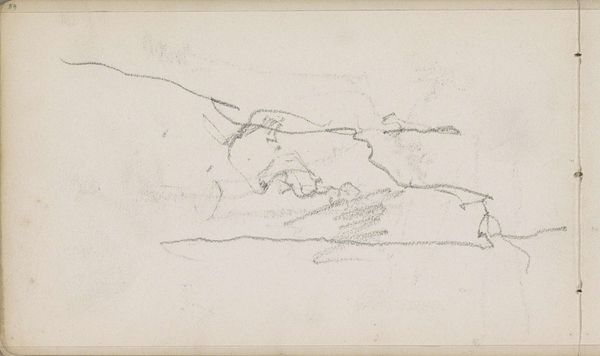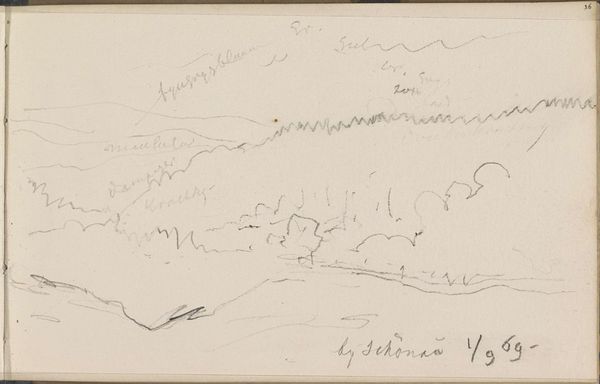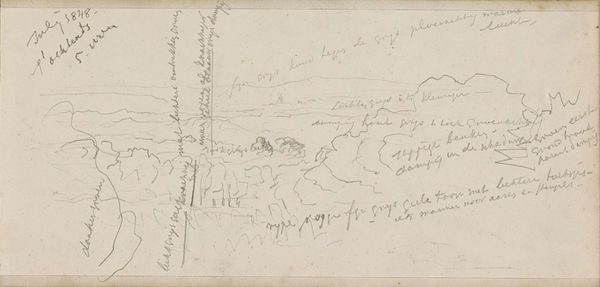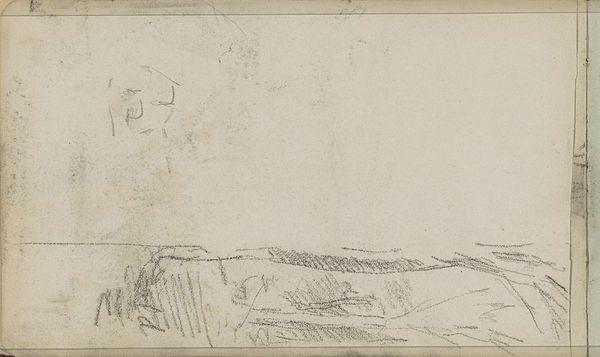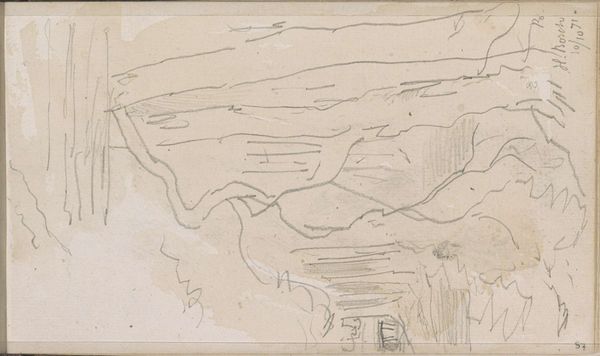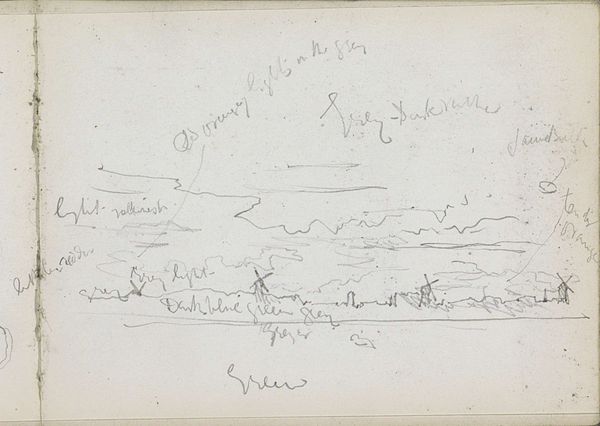
Dimensions: height 94 mm, width 148 mm
Copyright: Rijks Museum: Open Domain
Editor: This is George Hendrik Breitner's "Huizenrij in Amsterdam," a pencil drawing made sometime between 1912 and 1923. The hurried lines and pale tones create a rather bleak atmosphere. What do you see in this work? Curator: Beyond the surface of a simple cityscape, I see a critical commentary on urbanization and its impact on the everyday lives of ordinary people. The stark, almost skeletal lines suggest a sense of alienation, a theme that resonated deeply with artists during this period of rapid societal change. Editor: Alienation? That’s interesting. It seems like a pretty standard landscape drawing at first glance. Curator: Consider the historical context. Breitner was working during a time of immense social and political upheaval. Amsterdam was undergoing significant transformation, with traditional neighborhoods giving way to modern developments. How might this affect social equity? What class of people are most vulnerable during these massive building projects? Editor: So, you're saying the drawing isn't just about buildings, but also about the people affected by them. It makes me wonder about the relationship between progress and displacement. Curator: Precisely. Look closely at how the houses are rendered. They seem almost ghostly, fading into the background, as if they are being erased by the forces of modernity. Don't you feel that Breitner hints at how marginalized communities face disproportionate loss? Editor: Now I’m starting to see it, almost as if he’s making a statement about the price of progress. Thank you! Curator: It is vital that we engage in those intersectional conversations between aesthetics and cultural critique. Art allows us a glimpse into marginalized and neglected social strata.
Comments
No comments
Be the first to comment and join the conversation on the ultimate creative platform.
